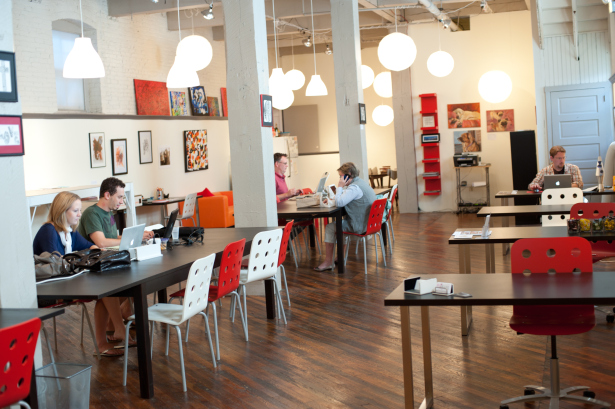
02 Mar Support Productivity, Creativity and Collaboration
One recent development in the workplace that I’ve witnessed is the concept of a communal office. This can be a large room where everyone comes in, sits down, pulls out a laptop and works. There’s no assigned place and, as a result, no commitment to a particular spot.
This model works then employees need to work closely with one another—where communication between staff is crucial.
The other way where I’ve seen the communal idea being used is in hospitals where staff shares space at opposite times. Someone working the evening hours can use the same area as someone who has worked during the day. Whether doctors, nurses or physicians’ assistants, this has become a way to maximize space.
Whether a communal set-up or a shared one, there’s no argument that both maximize the real estate in a facility. Where normally there might be concern about trying to accommodate private offices, people are set up to collaborate and/or overlap.
However, in creating an integrated space using Feng Shui principles, privacy and the ability to have control of their personal surroundings is a major component of the ideal workspace—-a place where the individual can be an individual.
Where do the kids’ pictures go? Where does that unique piece of inspiring artwork get hung? How does any of this happen when you don’t have a space to call your own?
Here’s what I’ve found has to happen in order to create a positive integrated and effective space for employees share their workspace:
- Create a container. Just because the individual workspaces have a looseness about them, the room in which all this happens needs to be tightly managed. Focus on the larger room in terms of color, artwork and lighting.
.. - Provide a quiet area. This is particularly true for the communal office where a significant number of people are working together. The noise level could get to be disruptive. If not a separate office or work room, at least make a separate corner available where two or three people could have a more intimate conversation or someone could easily work by themselves.
.. - Go ergonomic. Because the chairs are being use by various people, make sure they’re easily adjusted for different heights and individual preferences. Ideally they should roll easily, have arms, and a tall back.
.. - Use the circle model. Setting up worktables in a circle is a move toward better conversation and more cooperation between employees. Several smaller circular areas is better than one long row of work places and it goes a long way toward encouraging teamwork.
Communal and shared space is definitely here to stay for many reasons, not the least of which is that younger employees appreciate the camaraderie. Space is being used differently these days. The concept of creating “good Feng Shui” in a private office is becoming less applicable and, instead, we are looking to create a workable integrated space where collaboration rather than isolation is the theme.
